Your scope shows the timing at \$100\:\mu\textrm{s}\$. This may either be you setting the cursors, or else the automated use of a measure function on the scope. You don't say. Either way, I agree with Olin's comment that this is close to 9600 bps, which is a common bit rate for RS-232 communications.
However, your own comment about the external clock rate would, if true, argue that an exact 9600 bps is unlikely. \$8\:\textrm{MHz}\$ doesn't divide down evenly to 9600 bps.
Some other thoughts:
- If it really is a \$100\:\mu\textrm{s}\$ bit width, then they've exceeded the \$\pm 2\%\$ allowable accuracy variation allowed for the common rate of 9600 bps. (If you need to see the calculations and thoughts behind this figure, see this Maxim page.) If the scope accuracy we accept is only approximate, then it may not exceed the accuracy requirements. Regardless, it's a good idea that you know they exist.
- This signal clearly isn't using RS-232 voltages, but instead perhaps ~\$ 3.5\:\textrm{V}\$ signalling.
- This signal uses a HI for MARK (in RS-232, a MARK is a negative voltage), so this must be logic level output from a micro and not RS-232 signalling.
If you take the required START bit and the minimum one-bit-time STOP away, this means there is probably at least seven remaining bit times for data:

The above would be interpreted an 0x2A regardless of endianness, if I'm paying attention.
However, this would be the chart for eight data bits:

In this case, the interpretation would be either 0xAA or else 0x55, depending on the endian nature of the stream. So this could represent your 0xAA (little endian, which I believe is more common.)
As you can see, the transmitter and receiver must a priori agree on the number of data bits and the endian nature of them.
The scope results could be interpreted as even longer serial word sizes. I have seen them before (9, most commonly, as some ICs used to support it but I've even seen 10 used before.)
Without agreement, it's difficult to be sure.
As a sidebar:
I remember the days when teletypes were moving from 5 bits to 6 bits (early 1960's DTE) right at the time RS-232 was created in 1960, as my dad had such a teletype sitting at home in an home office space. Six bit RS-232 communications did actually exist for a period of time.
ASCII coding was widely used during the late 1960's and early 1970's and is a 7-bit coding. It was very common for RS-232 data communications to use 7 bits of data.
Later, as communications ICs and microcontrollers came into common use and 8-bit register sizes were abundantly available, RS-232 was often extended to transmit/receive 8 bits at a time.
I think most people today just expect it to be used for 8-bit communications. But that wasn't always the case.


